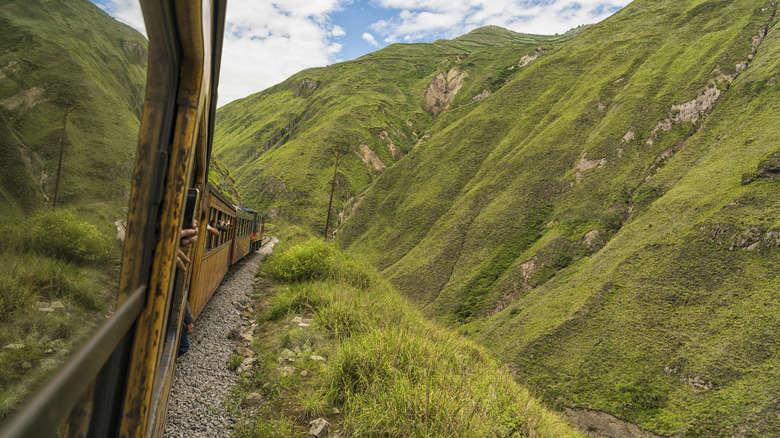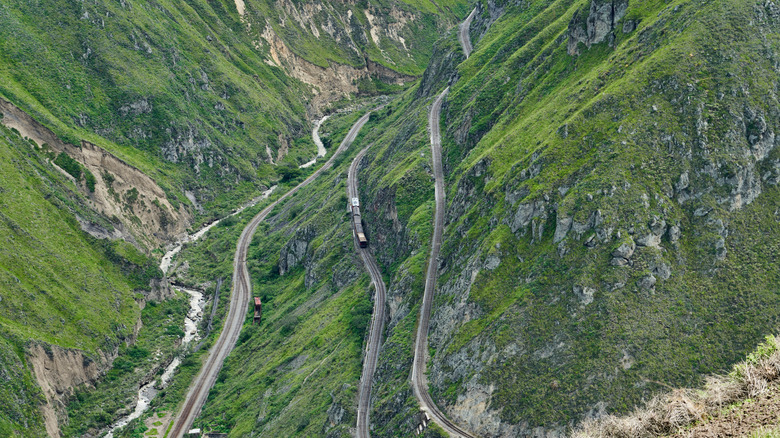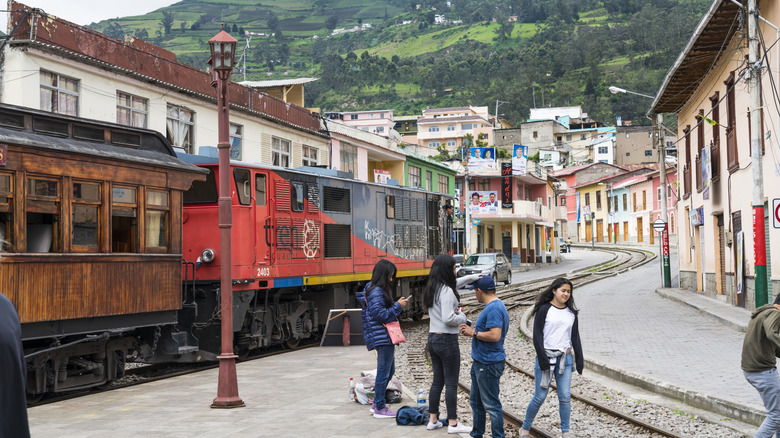“Don’t look down.” That’s the advice we hear, over and over, if we’re even remotely afraid of heights. In theory, if you don’t know how far up you are, you won’t feel the vertigo swelling in your head. But what if you’re supposed to look down? What if you’re riding a historic train through the Andes mountain range, and the slopes drop suddenly beneath the tracks, into steep valleys below? Do you cover your eyes until the two-and-a-half-hour ride is over, when you’ve safely arrived at the railroad platform? Or do you combat your fear, inching ever closer to the window, to take in these spectacular views? Do you aim your camera at this alpine landscape, even as the train follows two harrowing switchbacks through the grass-covered massifs?
Whether you’re acrophobic or not, the Devil’s Nose train route in Ecuador is quite the thrill ride. This 7.5-mile segment is part of a longer, historic train line that once connected the cities of Quito and Guayaquil. Quito, the nation’s capital, stands at about 9,350 feet above sea level, while Guayaquil lies near the coast; back at the turn of the century, this difference in elevation made the railroad project seem impossible, and many workers died in the effort. Thanks to brilliant engineering, the line was opened in 1908; a nearby mountain is known in Spanish as “Nariz del Diablo,” or “Devil’s Nose,” which seemed to reflect this lethal construction project. The route has endured significant damage in the past century and is only a shadow of its former self, but this abbreviated segment remains an adventurous experience for budget-friendly vacationers in South America.
Riding the Devil’s Nose train in Ecuador
Today, the Devil’s Nose route is geared almost entirely for tourists, as are most of the surviving railroad lines in Ecuador. And there’s no reason to fear this route: Yes, the surrounding mountains are high and steep, but the train embarks three times daily — except for Mondays — and completes the journey between the towns of Alausí and Sibambe without incident. The train ride isn’t cheap; each adult ticket costs about $40, and there are only 118 seats on train, so you’re encouraged to reserve in advance. Still, most travelers would say it’s worth the price; wood-framed trains are nearly extinct in other parts of the world, and passengers benefit from a bilingual guide and are treated to a traditional dance performance. Note that the Devil’s Nose train has been temporarily closed, but is due to reopen soon in May 2025 under new, governmental ownership, so these details are subject to change.
One of the best aspects of the journey is the land itself; flying into any of Ecuador’s four international airports is convenient, but it deprives you of the Andes’ scale and grandeur. Ecuador’s portion of the Pan-American Highway is rich in epic mountain vistas, but drivers also have to keep their eyes on the road. The Devil’s Nose train is your chance to get up close and personal with the mountains, watching rivers tumble, wildlife cling to cliffs, and folded ridges scroll past the windows — without so much as pressing an accelerator. You could easily add this little slice of Ecuador to a list of the absolute best places to travel by train.




